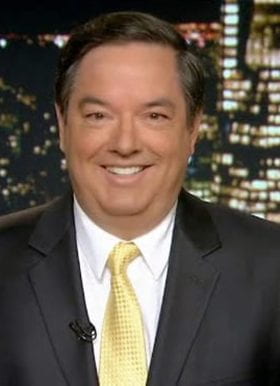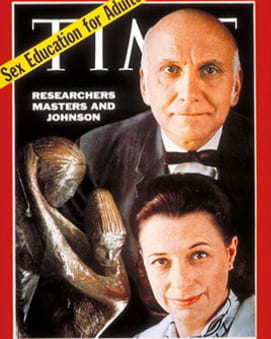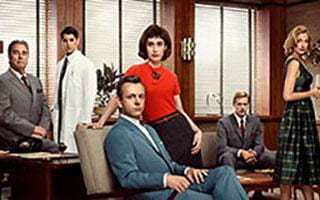
Thomas Maier and Michelle Ashford
A half-century ago, American societal beliefs about sex, and the medical establishment’s understanding of the term and all it implies, were changed forever with the publication of “Human Sexual Response.”
The findings, based on the unique methodology of two Washington University researchers — William Masters and Virginia Johnson — sent shock waves through the nation and provided impetus for the cultural upheaval begun in the 1960s and which continues today.

A program to commemorate that event will feature Thomas Maier, author of “Masters of Sex: The Life and Times of William Masters and Virginia Johnson, the Couple Who Taught America How to Love;” and Michelle Ashford, creator and show runner of the hit Showtime television series of the same title, to discuss “Sex in America, Then and Now: The Lasting Legacy of Masters and Johnson.” The program, this year’s Helen Manley Lecture, will begin at 5 p.m. in Graham Chapel.
If the story sounds familiar, you may have read Maier’s biography, or you may be a fan of the TV show (Season Four begins on September 11) or you may be of a certain age when these two names were so famous they once graced the cover of Time magazine.
While the show has taken considerable liberties with the true story, the essence of this dramatic tale remains intact and serves as a fascinating reminder (or eye opener to younger generations) of how far we’ve progressed and how much farther we need to advance our understanding of the mysteries of desire, intimacy, and procreation.
And nothing illustrates the mysterious aspect of sexual desire better than the complicated personal relationship of the two researchers, brought to life by actors Lizzie Caplan and Michael Sheen in Ashford’s TV show. For Masters and Johnson, the professional became the personal: he divorced his wife to marry her, a twice-divorced mother of two, and the story unfolds during an era when the subject was taboo, adultery was disgraceful, and women who openly enjoyed sex were not part of polite society.

When Sheen utters the line, “We are doctors, for Christ’s sake, and I simply want to know what happens to the body during sex,” it might not hit you right away how shocking that quote is. When the story begins in 1950s St. Louis, Masters was a distinguished scientist at Washington University with a thriving ob gyn practice and a reputation for helping infertile couples conceive. Yet he had no knowledge of the physiology of the act of what is literally the key to life.
He continues: “There are libraries on how babies are born but not a single study on how they are made.”
Yes, the pioneering work of Alfred Kinsey preceded Masters and Johnson, but those findings were based on interviews. Driven by ambition as well as scientific curiosity, Masters was determined to base his findings on personal observations made in the laboratory, but he got nowhere until Virginia Johnson entered his life. As a team, they not only wrote the book on what happens to bodies during sex, they used that knowledge to establish therapies for sexual disorders that are still used today.
To say their methodology was unorthodox is quite the understatement. The obstacles they had to overcome included convincing hundreds of couples to shed their clothes and inhibitions and copulate under observation, as well as convincing the university to fund the research.
“Human Sexual Response” created a spectacular splash, first in American culture then beyond, and blew the lid off many sacrosanct myths, especially regarding female sexual response. Although they didn’t get everything right, and they were rightly criticized for some of their theories on homosexuality, they helped usher in an age of enlightenment that led to the establishment of therapies covering a range of real disorders. Furthermore, their findings continue to influence disciplines as divergent as biology and obstetrics to economics and politics, as well as the myriad ways in which media have expressed these themes in our culture.
For information on the Masters of Sex TV series
For information on the “Masters of Sex” biography